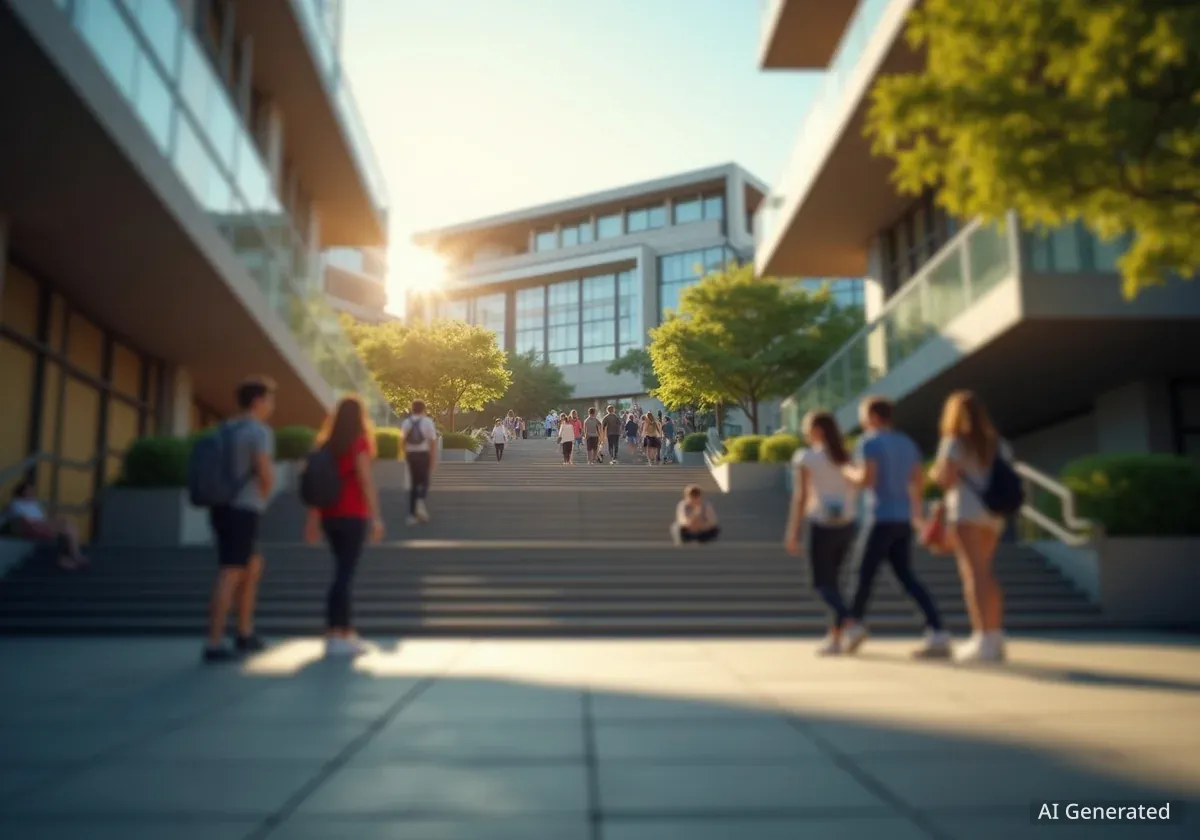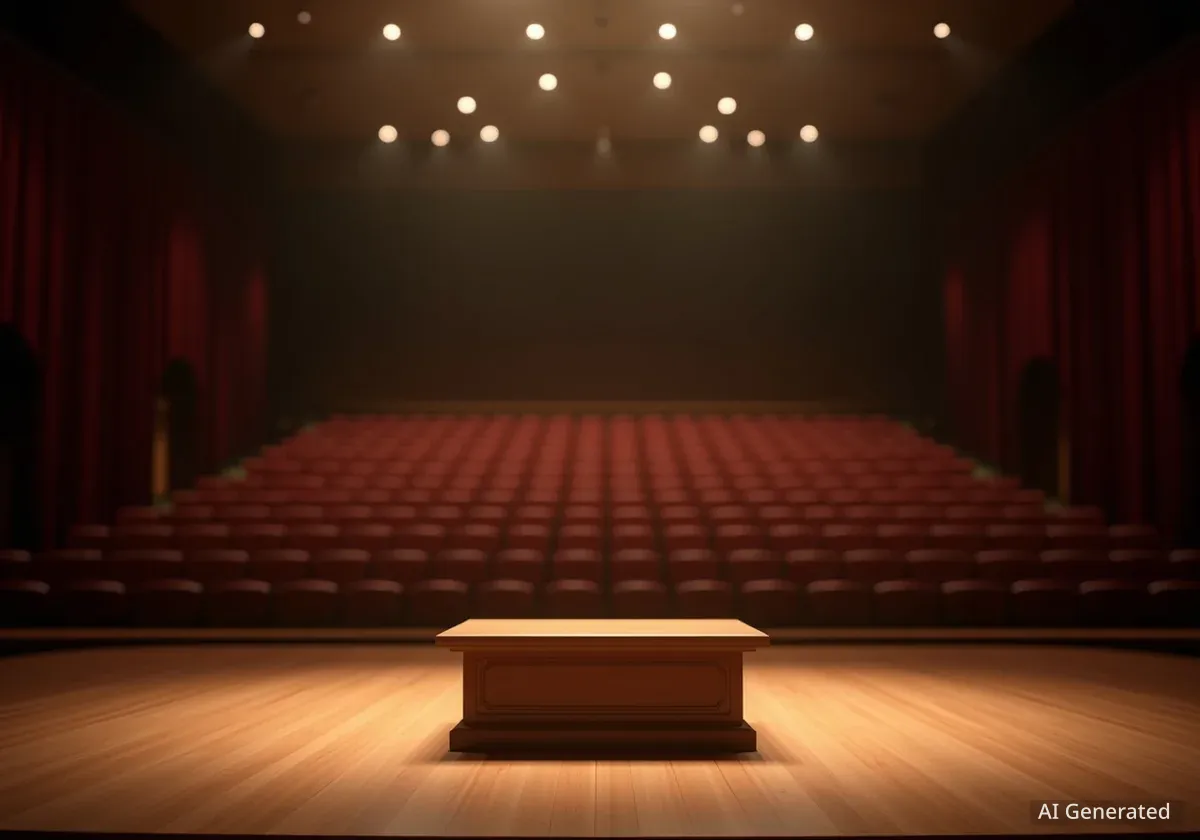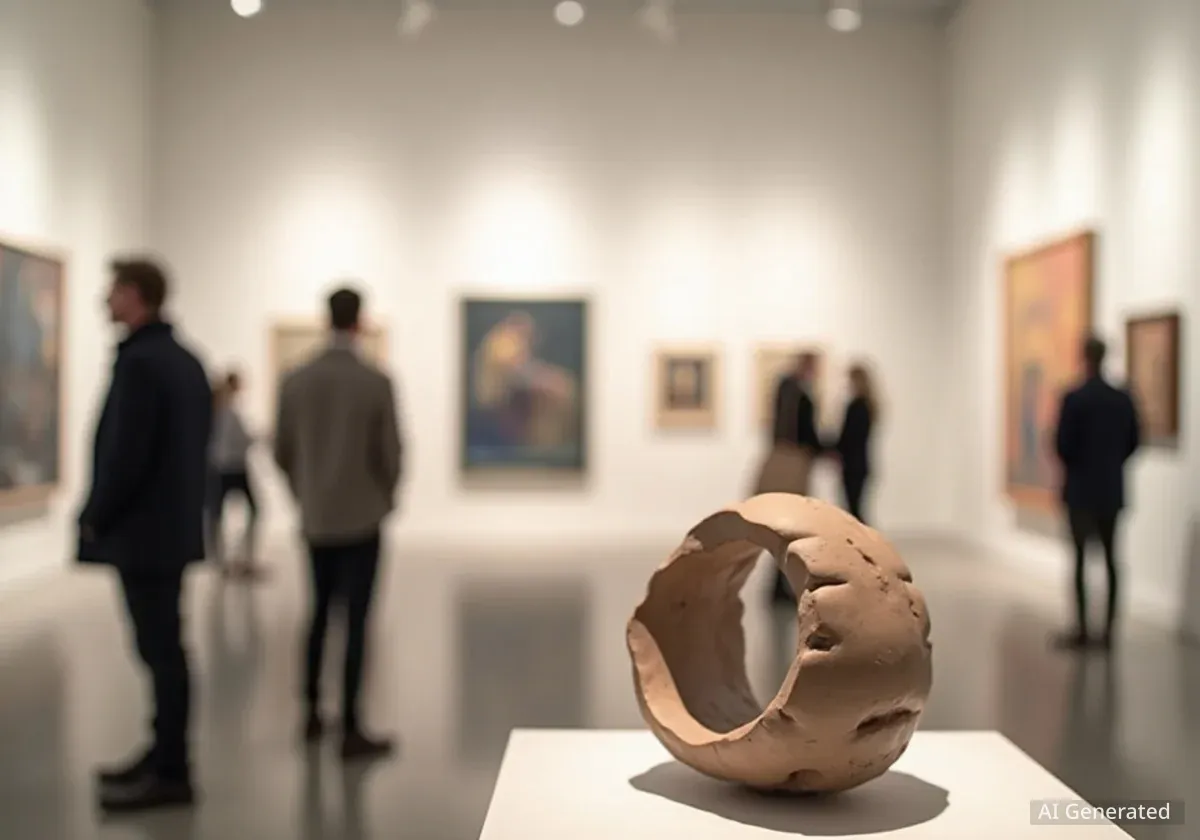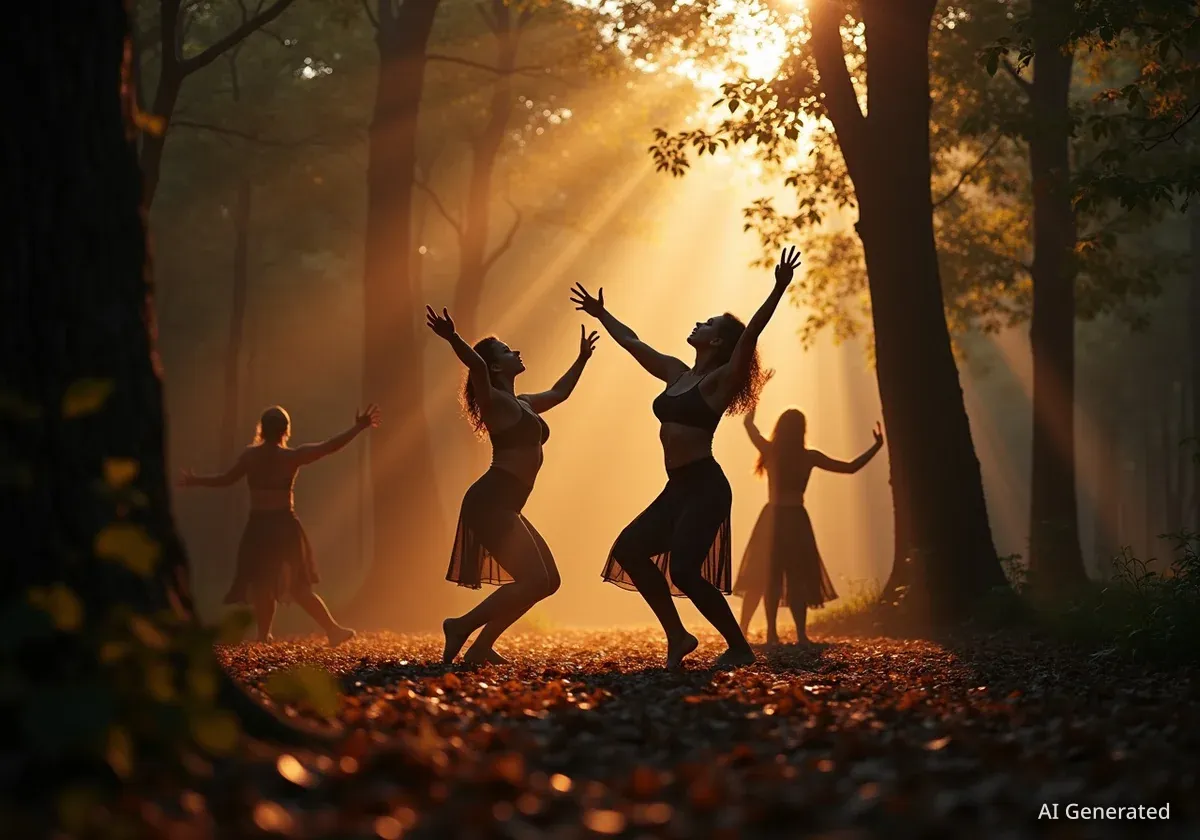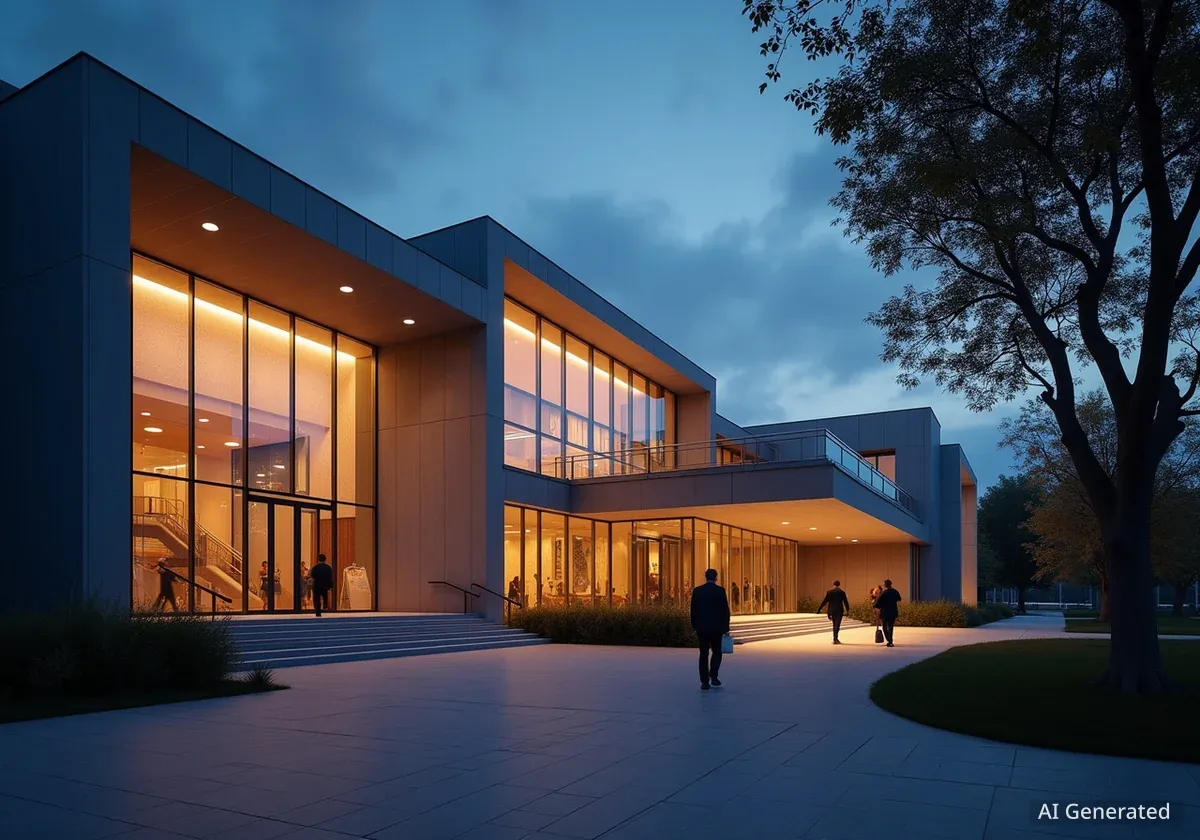A 12-day artist residency at Stony Brook University has produced a new vision for one of its central landmarks, the Staller Steps. Visiting Caribbean artists Dean Arlen and Adele Todd led a collaborative project called The Room, which engaged students and faculty in reimagining the public space to foster greater connection and inclusivity. The initiative concluded with a formal proposal submitted to university leadership.
The project, which ran for nearly two weeks and culminated in an artist talk on October 9, 2025, focused on transforming the Staller Steps from a simple thoroughfare into a destination for rest, conversation, and community engagement. The residency was presented by the College of Arts and Sciences’ Center for Changing Systems of Power (CCSP) and the Department of Sociology.
Key Takeaways
- Visiting artists Dean Arlen and Adele Todd completed a 12-day residency at Stony Brook University.
- The project, titled "The Room," involved students and faculty in redesigning the campus's Staller Steps.
- A formal proposal with new architectural and functional designs was presented to the university president and provost.
- The initiative aimed to promote "aesthetic justice," connecting creativity with social inclusion and community building.
A Collaborative Approach to Public Space
The core of the 12-day residency was a hands-on, collaborative process. Artists Dean Arlen and Adele Todd converted Staller Theater One into an open studio, inviting all members of the Stony Brook community to participate. Students, faculty, and staff joined workshops to share their perspectives on the Staller Steps, a sloped area that serves as a major connector on the academic mall.
Participants were encouraged to contribute through drawing, writing, and discussion. The goal was to collectively explore the current and potential role of the space in campus life. This method was central to the project's philosophy, which viewed the design process itself as a form of community building.
The Staller Steps: A Campus Hub
The Staller Steps are more than just a pathway between the Staller Center for the Arts and the main academic mall. For decades, the area has functioned as an informal gathering spot, a venue for social and political events, and a central meeting point for the Stony Brook community. The project sought to build upon this existing significance by intentionally designing for connection.
Dean Arlen, an installation artist, described the project's focus during the concluding artist talk. "It’s about companionship and creativity," he stated, emphasizing that the workshops were designed to foster dialogue and shared ownership over the campus environment.
Introducing 'Aesthetic Justice'
The residency was framed around the concept of aesthetic justice, a term used by project coordinator Manisha Desai. Desai is the executive director of the CCSP and a professor in the Departments of Sociology and Women’s, Gender, and Sexuality Studies.
"This is a kind of aesthetic justice. All of us have creativity within us, but we tend to think about aesthetics only in terms of what’s in a gallery. If we think about our own creativity, that can actually enable and enhance social justice."
According to Desai, the project's methodology was intentionally inclusive. It aimed to empower individuals to apply their own creativity to solve real-world problems related to the spaces they inhabit daily. By asking students to think critically about land use, history, and belonging, the project connected artistic practice with broader social issues.
"It releases our ability to think about solutions for social justice and the big problems," Desai explained. "That’s why it matters, because it connects creativity to community."
A New Vision for the Staller Steps
The collaborative workshops resulted in a detailed proposal for a redesigned Staller Steps. The plan focuses on transforming the area into a more accessible, comfortable, and engaging space. The document, compiled by the artists and student participants, was formally delivered to the university president, provost, and the campus library for archival purposes.
Key Design Proposals
The redesign plan includes several specific elements aimed at improving the functionality and atmosphere of the Staller Steps. The community-driven proposal serves as a blueprint for future campus development considerations.
Proposed Architectural and Functional Changes
The vision outlined in the proposal aims to make the Steps a destination rather than just a transit area. Key features of the proposed design include:
- Architectural Arches: The design incorporates arches inspired by native forms, intended to create a unique visual identity for the space.
- Improved Accessibility: Clear, defined pathways are proposed to improve movement and make navigating the sloped terrain easier for everyone.
- Comfortable Seating: The plan includes reclined seating strategically placed to encourage rest, study, and conversation among community members.
Together, these elements are designed to create a welcoming environment that invites people to pause and interact, strengthening the social fabric of the campus.
The Future of the Project
With the residency concluded and the proposal delivered, the focus now shifts to implementation and continued engagement. Adele Todd, a visual artist and graphic designer, noted during the artist talk that the initial response from university leadership has been positive.
However, she stressed that the project's success depends on maintaining momentum. "People like the idea," Todd said. "But what we need is a bigger conversation, one that doesn’t end when we leave campus."
To keep the dialogue alive, Arlen and Todd plan to use social media and other digital platforms. Their goal is to create a channel where students can share updates, contribute new ideas, and encourage action from the university administration. "We could poke them and activate them to do something good," Todd added, highlighting the need for ongoing student advocacy.
The residency was supported by the Arts, Humanities and Lettered Social Sciences (AHLSS) Committee, reflecting a broader university commitment to socially engaged art. While the artists have left behind sketches and models, their primary contribution is a framework for participatory design that empowers the community to shape its own environment.

